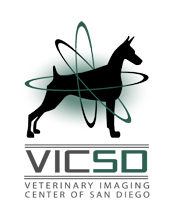Side Effects and Sarcopenia from the New Iodine-Restricted Diet for Feline Hyperthyroidism
Seth Wallack, DVM, DACVR
When Y/D came on the market, vets were asking my opinion. Will it work? Are there side effects? Will you be turning the I-131 ward into a storage closet? At that time, my educated guess was that Y/D would work in selective cases, but transiently and with few side effects. Well, I was partly correct.
The feeding restrictions associated with Y/D (isolated feeding, no treats) make it only feasible in select cases. What I really didn’t anticipate were the side effects. In fact, the side effect associated with feeding Y/D has resulted in feline specialists around the country talking about a new syndrome: sarcopenia.
What is sarcopenia?
Sarcopenia — from the Greek meaning “poverty of flesh”– is a degenerative loss of skeletal muscle mass. Y/D’s low protein content, 38%, is under the recommended 60% that cats need to maintain muscle mass. This lower protein content is resulting in pronounced muscle wasting in cats being fed Y/D over a few months.
So far, many have attributed this muscle wasting to the hyperthyroidism or the pet getting older, but in truth, the muscle wasting is due to diet.
So this is a factor for vets to consider. If you have a patient losing muscle mass after starting Y/D, you are likely witnessing the biggest side effect of this diet. And if your patient isn’t losing muscle mass on Y/D, then the cat is probably getting protein from another source, in which case the T4 will likely be high.





